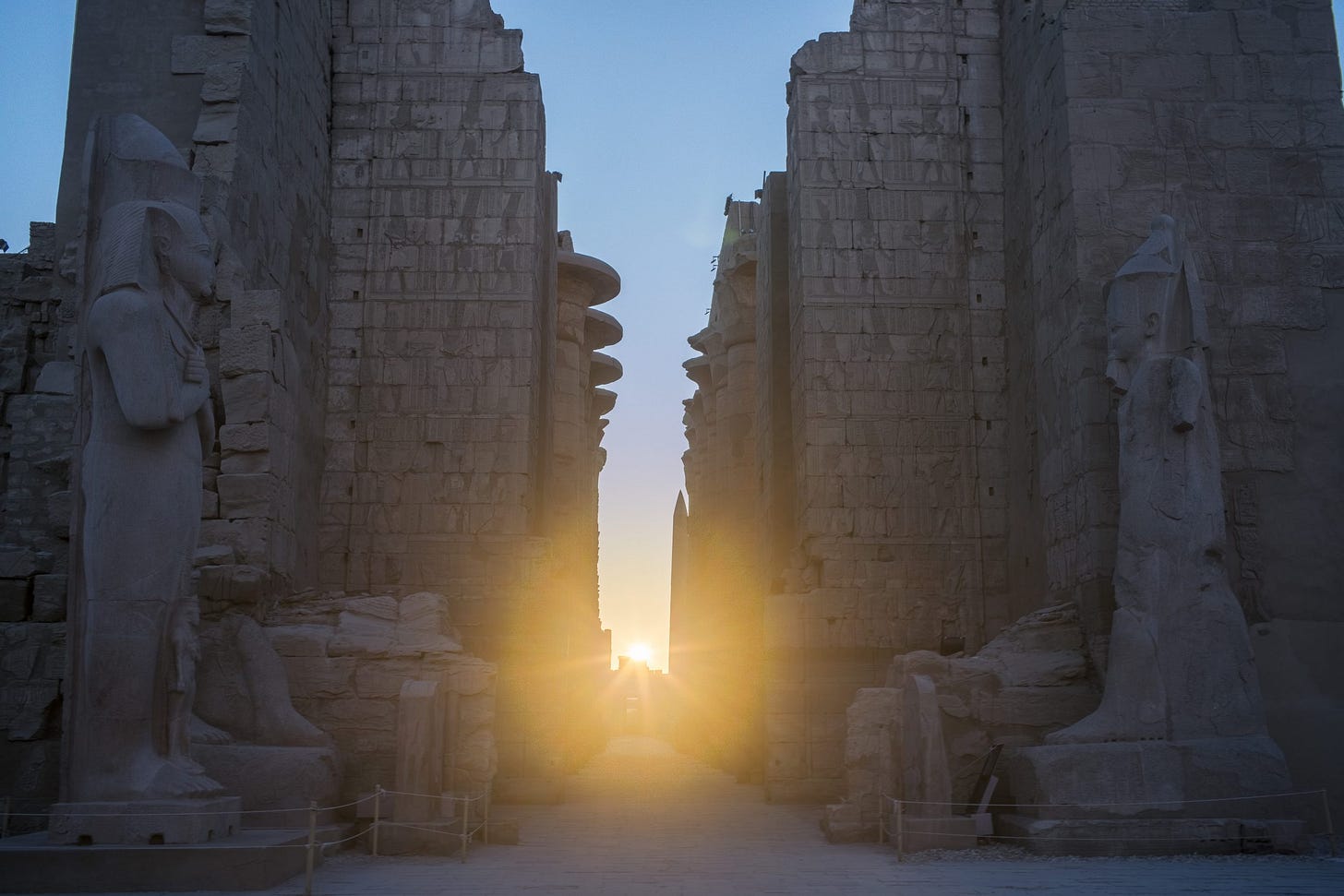We begin to witness cycles from the primordial waters of the womb. The womb is our first ocean, and where we grow. Within these waters, our many cells transform into a blastocyst, then an embryo, and in time we emerge into the world, out of the water, and onto the terra of the planet. This planet offers us the cycle of the day, the month, and the year. Cycles like these surround us every day, and one of the simplest and most true forms of ritual and meditation is to sit and observe these cyclic natures. Honoring their space and time within our existence.
Cycles and time exist in a symbiotic relationship—each guiding the other by the hand. Time provides us with a way to organize the patterns of the day, and cycles offer us structure shaped by the natural rhythms around us. We can trace this relationship back to prehistoric times, when early humans began tracking time by observing the movements of the sun and moon. These observations led to the creation of days, weeks, and months, enabling people to allocate time for hunting, agriculture, and ritual activities. Over time, this evolved into more formal tools, such as shadow clocks, which emerged around 3500 BCE, and water clocks by 1500 BCE—all inspired by the elements of nature. This reverence for time and cycles is also reflected in the sacred architecture found around the world, including Göbekli Tepe in southeastern Turkey, the Temple of Karnak in Egypt, the Mnajdra Temples in Malta, Newgrange in Ireland, and Chichen Itzá in Mexico.
We can further deepen our connection to time and natural cycles by tuning into the innate rhythms of our bodies, which reveal themselves through the menstrual cycle, pulse, circadian rhythm, digestion, and breath. These internal patterns not only reflect our biological processes but also connect us to a broader energetic reality. In classic Chinese medicine, this relationship is illustrated through the meridian clock—a system that maps the flow of Qi, or vital life force energy, through the body’s 12 main meridians over 24 hours, offering both visual guidance and a pathway to enhance health and wellness. Similarly, by observing our bio-magnetic fields—the subtle energies generated by bones, blood, brainwaves, and cellular activity—we become aware of another layer of this dynamic flow. This magnetic pulse is the life force that vibrates uniquely within each of us, reflecting the distinct rhythm of our authentic self.
These cycles and relationships with time can be further observed within our physical and energetic bodies, as well as in the universe surrounding them, through the macrocosm and microcosm perspectives. The macrocosm surrounds us, extending beyond our physical bodies, and flows with us throughout our lifetimes. Then, from the microcosm, we observe the biological cycles that occur within our physical bodies. This resonates with the principle of as above, so below, and as within, as without. The human body, or the microcosm, reflecting the cosmic order, the macrocosm.
In meditation, we can take time to sit with ourselves and observe these vast ranges of rhythmic cycles. In this realm of observation, we can find an endless array of answers. This relationship can come with ease, without force, and through simple observance. This is how I created this three-part meditation series. It allows the listener to honor patterns and rhythms within themselves and their surrounding. These brief increments of time are among the most profound forms of meditation that you can practice, taking moments each day to check in with yourself and honor the awareness of cycles within and without.
Please feel free to sit with one of these meditations, or with all of them. Taking what feels best and leaving the rest. I hope time is on your side and the cycles of your unique rhythm find you with these simple practices.
In good time,
Annie
“Bookends Theme.” YouTube, uploaded by Columbia, 8 Aug. 2016 (approx.), www.youtube.com/watch?v=yS1v5_j450o. Accessed 21 June 2025. youtube.com
Degner, David. “Solstice Sunrise at Karnak Temple.” David Degner Photography, 17 Dec. 2015, www.daviddegner.com/photography/karnak-temple-solstice/
Fruehauf, Heiner. Classical Chinese Medicine. “Chinese Medicine Holomap: 28 Stellar Constellations.” ClassicalChineseMedicine.org. https://classicalchinesemedicine.org/chinese-medicine-holomap-28-stellar-constellations/
Kramskoy, Ivan Nikolaevich. Mermaids. 1871, Arthive, https://arthive.com/ivankramskoi/works/321160~Mermaid






